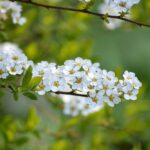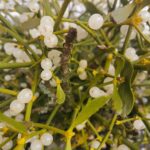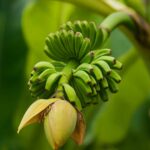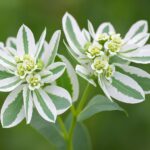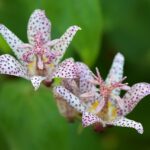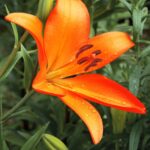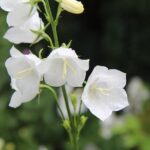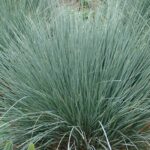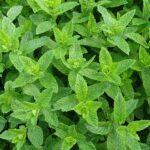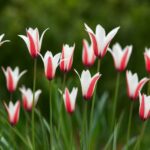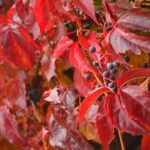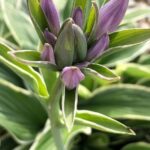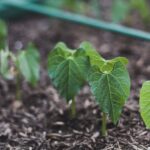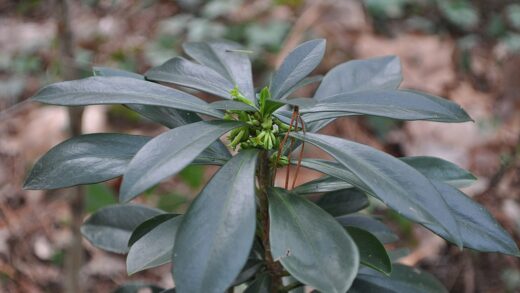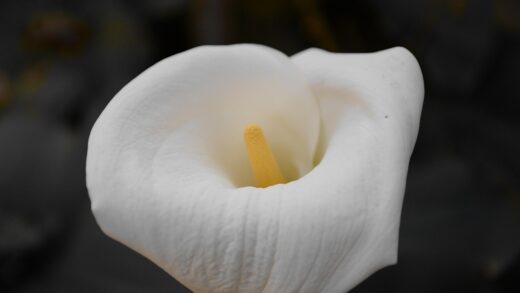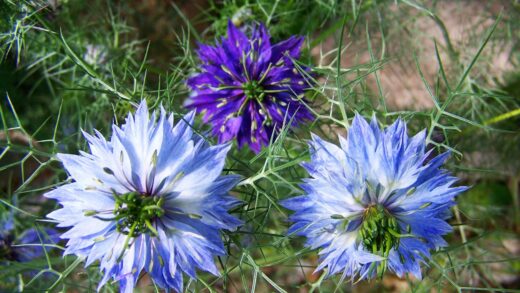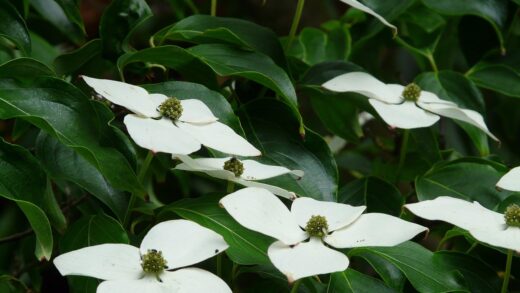The American violet, scientifically known as Viola sororia, is one of the most beloved and adaptable shade perennials, native to the woodlands and groves of North America. To understand its horticultural needs, it is essential to first examine the characteristics of its natural habitat, particularly the light conditions. This charming little plant has evolved for millennia in the understory of deciduous forests, where the amount and quality of light change dramatically with the seasons. The key to success, therefore, lies in our ability to replicate these conditions in the garden, providing it with the dappled, mosaic light in which it thrives. Creating the right light conditions not only ensures the plant’s health but also contributes to achieving the lush foliage and abundant flowering for which it is so admired.
In Viola sororia‘s natural environment, on the floor of deciduous forests, light conditions are extremely dynamic. In early spring, before the tree canopy fully develops, sunlight reaches the forest floor almost unimpeded, providing ample energy for the violets. This period is critical in the plant’s life cycle, as this is when it accumulates the energy reserves necessary for flowering and initial growth. As summer arrives, however, the tree canopy closes, casting deep shade on the understory and creating a completely different microclimate. During this time, the plant must manage with the filtered, lower-intensity light.
The concept of “dappled light” or “filtered shade” is central to the American violet. This does not mean complete darkness; instead, it describes a mosaic light condition where the sun’s rays reach the plant after being filtered through leaves or passing through gaps in the canopy. This type of illumination protects the violet’s sensitive leaves from scorching direct sunlight while providing enough energy to sustain photosynthesis. The morphology of the leaves, such as the relatively large and thin leaf blade, is also an adaptation to this environment, maximizing the light-absorbing surface area.
In terms of light intensity, significant differences can be observed between seasons. While in early spring the light intensity can reach tens of thousands of lux, in summer, under the dense canopy, this value can drop dramatically to just a few hundred lux. The American violet has perfectly adapted to this duality during its evolution, taking advantage of the spring abundance and tolerating the summer “scarcity.” This strategy allows it to successfully compete for resources with other, more aggressively spreading woodland plants and to delight us with its modest yet charming flowers year after year.
The relationship between the spectral composition of light and photosynthesis
For plants, light is not just an energy source but also a carrier of information, and its spectral composition fundamentally influences growth processes. Photosynthesis, the process by which plants convert light energy into chemical energy, is most efficient in the red and blue wavelength ranges. Chlorophyll pigments, particularly chlorophyll a and chlorophyll b, absorb these light rays to the greatest extent, while reflecting green light, which is why we see leaves as green. Understanding the spectral distribution of light is key to understanding the biology of shade-tolerant plants like the American violet.
More articles on this topic
Under a dense canopy, the quality of light changes drastically. The tree leaves absorb a significant portion of the photosynthetically active red and blue light, so the light reaching the understory is proportionally much richer in green and far-red wavelengths. This “shade light” is less efficient for photosynthesis for most plants and requires special adaptations. Therefore, the American violet must contend not only with reduced light intensity but also with a spectral composition that is less optimal for it during the summer months.
Shade-tolerant plants like Viola sororia have numerous physiological and morphological adaptations to overcome these challenges. They often have a higher ratio of chlorophyll b to chlorophyll a, which helps them more effectively absorb the blue wavelengths that are more abundant in filtered light. Additionally, their leaves are often thinner and broader, which both increases the light-capturing surface and reduces self-shading within the leaf, allowing light to penetrate deeper into the leaf tissues. These fine-tuned mechanisms enable the violet to produce sufficient energy even in low-light conditions.
From a practical gardening perspective, all this means that for the American violet, protection from direct sunlight is not the only important factor. The plant feels best when the quality of light also resembles its natural woodland environment. Excessively strong, unfiltered sunlight can not only cause leaf scorch and soil desiccation but can also lead to a phenomenon called photoinhibition. This is a stress response where excessive light energy damages the photosynthetic apparatus, inhibiting the plant’s growth and development.
The optimal light requirements of the American violet in the garden
The knowledge gained from its natural habitat can be directly translated into horticultural practice. The ideal location for the American violet in the garden is one that most closely resembles the understory of North American deciduous forests. In practice, this means a location in partial to full shade, where the plant is protected from the sun’s most intense rays during the midday hours. “Partial shade” generally means four to six hours of direct, but not scorching, sunlight per day, while “full shade” means less than four hours of direct sunlight per day, or only heavily filtered, diffused light all day.
More articles on this topic
It is particularly important to distinguish between the effects of morning and afternoon sun. The morning sun, which is typically cooler and less intense, is particularly beneficial for Viola sororia. East-facing areas that receive a few hours of sun in the morning and are then shaded for the rest of the day provide perfect conditions. In contrast, the hot, strong afternoon sun, especially in west- or south-facing locations, can quickly scorch the leaves and lead to excessive water loss, causing a stressful state for the plant.
When choosing the most suitable planting locations, it is worth looking for natural analogies in our garden. Underneath deciduous trees is a classic and ideal choice, as this environment naturally mimics the seasonal light cycle: providing spring sun and summer shade. Similarly, the north or east side of a building can also offer adequate protection from the power of the midday sun. The American violet is excellently suited as a groundcover for shady borders, woodland gardens, or areas under larger shrubs, where it forms a lush green carpet.
Although the American violet is decidedly shade-loving, its adaptability is remarkable. With sufficiently moist soil conditions, it can tolerate more sun than would be ideal for it. However, it is important to know that in sunnier spots, its foliage may become paler and more yellowish, and the plant will generally be more exposed to stress. The secret to achieving lush, deep green foliage and rich flowering clearly lies in creating a shaded, but not too dark, environment full of filtered light.
Signs of insufficient and excessive light and their management
Although plants cannot speak, they communicate with clear signs when their environmental conditions are not right for them, and this is especially true for light conditions. One of the most characteristic symptoms of insufficient light is etiolation, or legginess. In this case, the plant, striving towards the light, grows thin, weak, elongated stems, and the stem sections between the leaves (internodes) become longer than normal. Flowering ceases or is significantly reduced, as the plant lacks sufficient energy to develop reproductive organs, and the leaves may be smaller and paler.
The other extreme, exposure to excessive light, can be at least as damaging, and its symptoms are also very conspicuous. The most common phenomenon is leaf scorch, which appears as brown, dry, dead patches on the leaves, especially where the sun hits them most strongly. The foliage may lose its vibrant green color, becoming faded, yellowish (chlorosis), or taking on a reddish, purplish hue due to the accumulation of stress pigments (anthocyanins). The plant often wilts, even if the soil is moist, because the rate of evaporation (transpiration) due to high temperature and light intensity exceeds the roots’ ability to absorb water.
Fortunately, both problems can be remedied with the right intervention. If you notice signs of insufficient light, the plant should be moved to a brighter location that is still protected from direct midday sun. A spot that receives more filtered light or early morning sun would be ideal. If the problem is excessive sunlight, the solution is to move it to a shadier location. It is advisable to schedule the transplanting for the cooler spring or autumn months to minimize stress on the plant. In some cases, pruning surrounding vegetation can also help create the appropriate dappled shade.
In summary, the foundation of successfully growing the American violet is the continuous observation of the plant and the interpretation of its responses to its environment. The key is to create an environment that provides filtered light, similar to its natural woodland habitat. If we find the right balance between light and shade and pay attention to the signals sent by our plant, it will reward us with a healthy, vigorous, and abundantly flowering groundcover that will be a charming ornament in our garden year after year.


